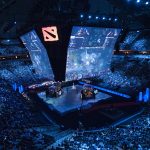Creative Approaches Drive Esports Engagement in 2025
As we enter 2025, the esports industry continues to evolve and innovate, finding new ways to captivate audiences and drive engagement. From immersive technologies to innovative marketing strategies, esports organizations are pushing the boundaries of fan interaction and monetization.
Embracing Virtual Reality and Augmented Reality
One of the most exciting developments in esports engagement is the widespread adoption of virtual reality (VR) and augmented reality (AR) technologies. These immersive experiences allow fans to feel as if they’re right in the middle of the action, whether they’re watching from home or attending live events.
Virtual Stadiums
Leading esports organizations have created virtual stadiums where fans can gather, interact, and watch matches together. These digital venues offer customizable avatars, virtual merchandise shops, and even opportunities to meet favorite players in a digital space.
AR-Enhanced Live Events
For those attending physical events, AR overlays provide real-time statistics, player information, and interactive elements that enhance the viewing experience. Fans can use their smartphones or AR glasses to access additional content and engage with sponsors in innovative ways.
Gamification of Fan Engagement
Esports companies are leveraging the principles of game design to make fan interactions more engaging and rewarding.
Loyalty Programs with a Twist
Traditional loyalty programs have been reimagined with gamification elements. Fans earn points, unlock achievements, and level up by participating in various activities, from watching matches to sharing content on social media. These points can be redeemed for exclusive rewards, creating a sense of progression and accomplishment.
Interactive Predictions and Betting
Many platforms now offer interactive prediction games where fans can guess outcomes of matches or in-game events. While some integrate with legal betting platforms, others use virtual currencies or points systems to keep engagement high without real money stakes.
Personalized Content Experiences
Esports organizations are harnessing the power of data analytics and AI to deliver highly personalized content to fans.
AI-Curated Highlights
Machine learning algorithms analyze fan preferences and viewing habits to create personalized highlight reels. These custom compilations ensure that each fan sees the content most relevant to their interests, whether it’s specific players, teams, or types of plays.
Dynamic Content Delivery
Streaming platforms now offer multiple feeds for the same event, allowing viewers to choose their preferred commentary style, camera angle, or even language. This level of customization caters to diverse audience preferences and enhances the overall viewing experience.
Community-Driven Content Creation
Esports organizations are tapping into the creativity of their fan bases to generate engaging content and foster a sense of community ownership.
Fan-Created Tournaments
Some platforms now allow fans to organize and run their own tournaments, with the best receiving official support and promotion. This grassroots approach not only generates content but also identifies emerging talent and trends within the community.
User-Generated Content Challenges
Regular challenges and contests encourage fans to create and share their own content, from highlight videos to fan art. The best submissions are featured on official channels, giving fans a chance to showcase their creativity and passion for their favorite games and teams.
Innovative Sponsorship Integrations
Brands are finding more organic and engaging ways to integrate into the esports ecosystem, moving beyond traditional advertising methods.
In-Game Brand Experiences
Some games now feature branded in-game items or experiences that provide real value to players while promoting sponsor products. For example, a beverage company might offer in-game power-ups that mirror the effects of their energy drinks.
Sponsor-Backed Player Development Programs
Major brands are investing in grassroots esports development, sponsoring amateur leagues and training programs. This not only generates goodwill but also helps identify and nurture the next generation of esports stars.
Cross-Platform Engagement Strategies
Recognizing that fans engage with esports across multiple platforms, organizations are creating cohesive experiences that span various touchpoints.
Integrated Social Media Experiences
Social media platforms are now more deeply integrated into esports broadcasts, with live reactions, fan polls, and user-generated content appearing in real-time during streams.
Second-Screen Applications
Dedicated companion apps provide supplementary content, statistics, and interactive features that complement the main broadcast, keeping fans engaged even during lulls in the action.
Conclusion: A New Era of Fan Engagement
As we move further into 2025, the esports industry continues to set new standards for fan engagement. By leveraging cutting-edge technologies, embracing community-driven content, and creating personalized experiences, esports organizations are not just entertaining their audiences but actively involving them in the growth and evolution of the industry.
The creative approaches being developed in esports are likely to influence fan engagement strategies across the broader entertainment and sports landscapes. As the line between virtual and physical experiences continues to blur, we can expect even more innovative and immersive ways for fans to connect with their favorite games, players, and teams in the years to come.






